[coffee cultivation] how to use fungicides to control coffee leaf rust?
Professional coffee knowledge exchange more coffee bean information please follow the coffee workshop (Wechat official account cafe_style)
Coffee leaf rust is a potentially destructive fungus that threatens coffee crops in all producing areas except Hawaii. Because it is easy to spread, the infection can quickly spread to the entire farm. So what should you do if you have found yellow patches or dusty spores that are the hallmark of leaf rust on coffee crops? Please read carefully to find out the answer.
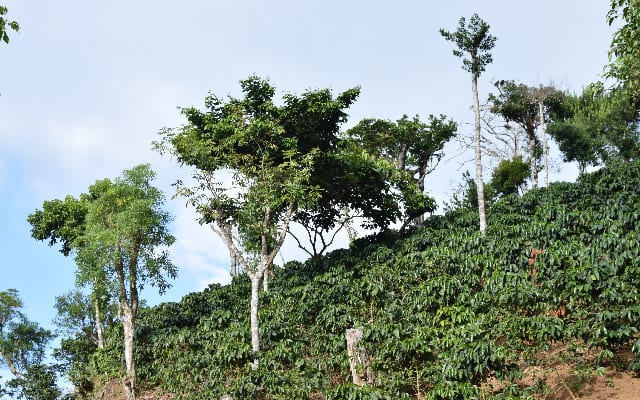
Copper-based fungicide
Coffee leaf rust spreads easily through wind, rain and human contact. Tools and equipment can also spread tiny spores to new plants. It is therefore recommended to use preventive methods to control fungi, but it is understandable that even with these precautions, you may find yourself unfortunately infected and spread rapidly.
The combination or alternating use of copper-based fungicides and internal absorption fungicides is the most effective treatment recommended. When there are a small number of infections, copper-based fungicides are usually used, while internal fungicides are used for large-scale outbreaks.
But if left untreated, copper accumulates in the soil to levels that are toxic to coffee and other crops and wildlife. For this reason, it is most reasonable to use copper-based fungicides only when the infection is large enough. Each producer needs to decide for himself when to use fungicides. Alvaro Alvaro Gaitan, a former director of plant pathology at Cenicaf é, told me that many farmers use copper-based fungicides when their crops are infected by about 10 per cent of the infection rate.
"many small farmers like to wait and see if the epidemic will affect the entire plantation before spending money," Alvaro said. However, the control of leaf rust must be preventive (not reactive), and when farmers realize that the infection rate is very high, it is often too late, and even the best fungicides are useless. "
The cost of fungicides is also a factor in determining when crops are managed. "the cost of [fungicides] can range from $100 to $400 per hectare per year," Alvaro said. It depends on the product you use, the application method, and the number of times (area) statistics you must enter the drawing application to make. "
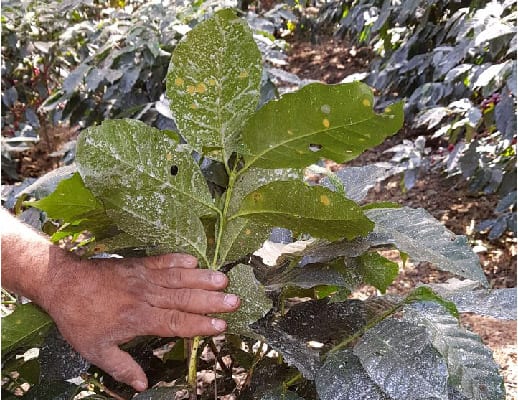
Coffee plants sprayed with copper-based fungicides
Chris Starry is a fifth-generation coffee producer in Guatemala and co-founded Truth Trading (Truth Trading Company). "after we found leaf rust in some areas, we began to focus on and repeatedly monitor these areas," he said. When there were more leaf rust outbreaks, we arranged to spray copper-based fungicides.
"our goal is the whole farm because the copper-based fungicide we use is a mixture of hydrated lime and copper sulfate. It doesn't work like antibiotics-it only works on the surface of the leaves. We try to eliminate leaf rust through contact [because] coffee leaf rust spreads through contact. "
This mixture of copper sulfate and hydrated lime is a commonly used fungicide, and you may have heard of its other name: Bordeaux liquid or Bordo Mix. Chris told me that he prefers to spray the entire farm rather than focus on the infected area.
"when workers go into areas infected with leaf rust and [spray], it is easy to bring leaf rust fungi to other areas where they are not infected. By spraying the whole farm, the fungus they carry doesn't matter, "he said.
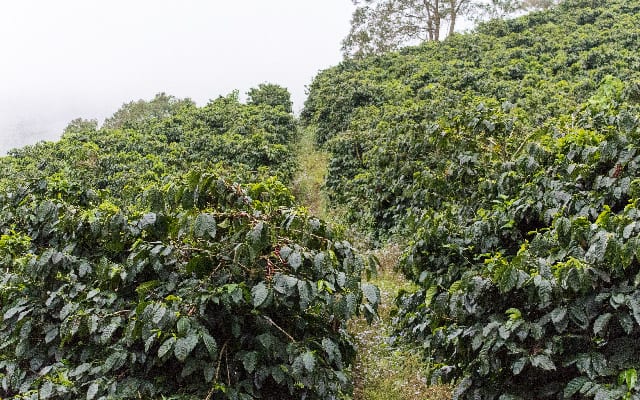
Internal absorption fungicide
Although efficient, copper-based fungicides are sometimes not enough to completely control the epidemic. Internal fungicides are absorbed by plants and can be moved from the application site to other parts of the plant. Therefore, internal inhalation fungicides are very effective in the treatment of infection.
Producers have their own criteria for when to use internal fungicides, but Alvaro told me that most people choose to use them when the infection spreads to a level of 10% to 20%. "the substances that are effective against coffee leaf rust are triazoles, most recently methoxyacrylate," he said. "
Alvaro also told me that although these fungicides are not organic, they do not affect the taste of coffee. What are the disadvantages of that? First, they have historically been expensive, although they are now more cost-effective. But the main disadvantage of using compounds is that their accumulation in water and soil destroys related ecological absorption.
The use of internal fungicides to control coffee leaf rust is a big problem for producers. Should they use these effective but non-organic fungicides to save the upcoming harvest? Or is it more important to protect local wildlife and maintain organic certification? Every time there is an outbreak of leaf rust, producers need to consider different factors in a particular environment.
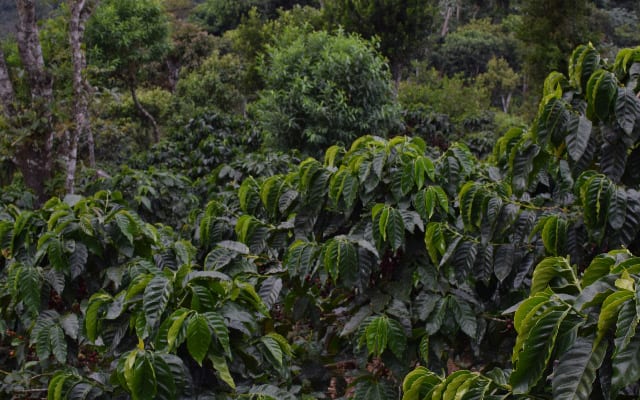
Natural method
Coffee leaf rust has spread successfully because it has no natural predators in many coffee growing areas. The spread of coffee from Africa to Latin America is equivalent to saving leaf rust fungi from predators and competitors, allowing them to thrive and multiply rapidly. Alvaro told me to use a fungus that naturally controls coffee leaf rust, but stresses that it is not a very effective commercial treatment.
"Fungi propagate through spores, and another fungus, Lecanicillium lecanii, can eat [coffee leaf rust] spores and destroy them. The problem is that the fungus works only after the [coffee leaf rust] fungus destroys the leaves. "
Leaves are important for photosynthesis, which provides energy for the production of coffee fruits. Therefore, although coffee leaf rust can be prevented by other fungi, reduced yield or plant damage has become a fait accompli.
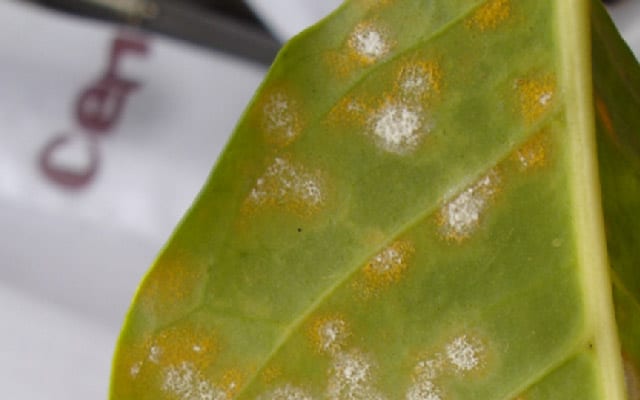
Lecanicillium lecanii fungi attack the spores of coffee leaf rust to form white powdery patches.
Attempts have been made to make organic treatments and fungicides with little success. "We have tested many different molecular and organic products that can be used as fungicides or impedance inducers, but so far none of them can be recommended to farmers for practical use," Alvaro said. This is the importance of scientific testing of potential fungicides-reducing the risk of major losses to farmers. "
"people have been trying impedance inducers, which can be natural crops or organic organisms that turn on plant defenses before leaf rust arrives. But they have a very short validity period and require a lot of spraying, which makes it very expensive, "he said."
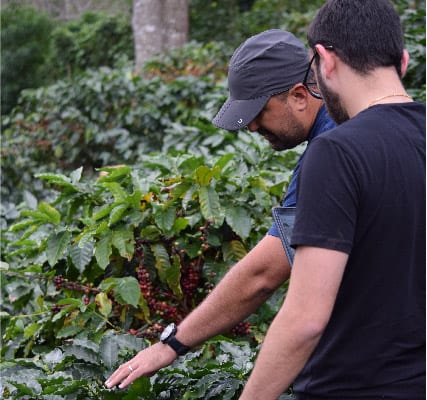
Managing the outbreak of coffee leaf rust is a balance among many variables. Before you look for a fungicide, you must consider how it will affect local eco-absorption, your budget, and any impact on organic certification.
The complex balance of these factors reminds people that preventing and controlling the spread is the best way to control coffee leaf rust. Consider how to implement preventive methods on your own farm, such as planning paths, keeping records, and planting disease-resistant varieties.
Please note: before implementing the recommendations in this article, we recommend that you consult local technical experts, as differences in climate, soil types, varieties, and processing methods will affect best practices in production and processing.
Original author: Neil Soque
Translated from: Perfectdailygrind
END
Important Notice :
前街咖啡 FrontStreet Coffee has moved to new addredd:
FrontStreet Coffee Address: 315,Donghua East Road,GuangZhou
Tel:020 38364473
- Prev

[hand brewing skills] the key factors affecting coffee brewing: how to inject water?
Professional coffee knowledge exchange more coffee bean information please follow the coffee workshop (Wechat official account cafe_style) there are three kinds of T:Time (time), Temperature (temperature), and Turbulence (flow) in the hand flush. Today we are going to introduce the flow of water, that is, the Turbulence of the three T. When practicing hand flushing, we often practice the skill of water injection.
- Next
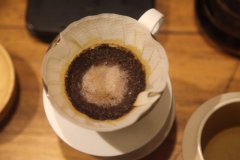
The key factor affecting the brewing of hand-brewed coffee-time_brewing time how much is better
Professional coffee knowledge exchange More coffee bean information Please pay attention to coffee workshop (Weixin Official Accounts cafe_style) in recent hand-washed courses Students are lovely and studious, based on the universality of questions, here to share with you one of our most frequently asked extraction time in class!! When brewing, we can imagine coffee, there are fat and thin coffee powder.
Related
- Beginners will see the "Coffee pull flower" guide!
- What is the difference between ice blog purified milk and ordinary milk coffee?
- Why is the Philippines the largest producer of crops in Liberia?
- For coffee extraction, should the fine powder be retained?
- How does extracted espresso fill pressed powder? How much strength does it take to press the powder?
- How to make jasmine cold extract coffee? Is the jasmine + latte good?
- Will this little toy really make the coffee taste better? How does Lily Drip affect coffee extraction?
- Will the action of slapping the filter cup also affect coffee extraction?
- What's the difference between powder-to-water ratio and powder-to-liquid ratio?
- What is the Ethiopian local species? What does it have to do with Heirloom native species?

